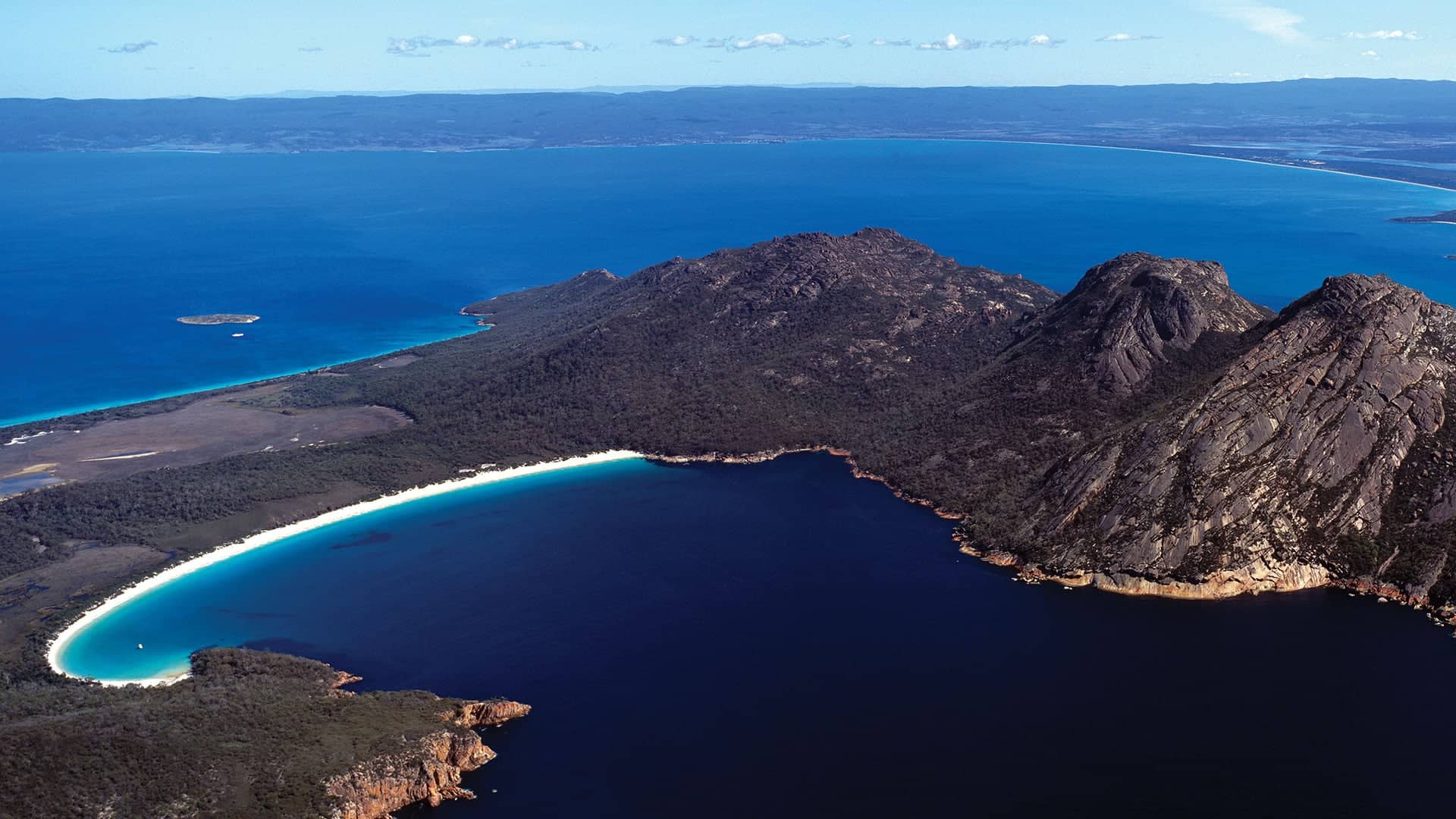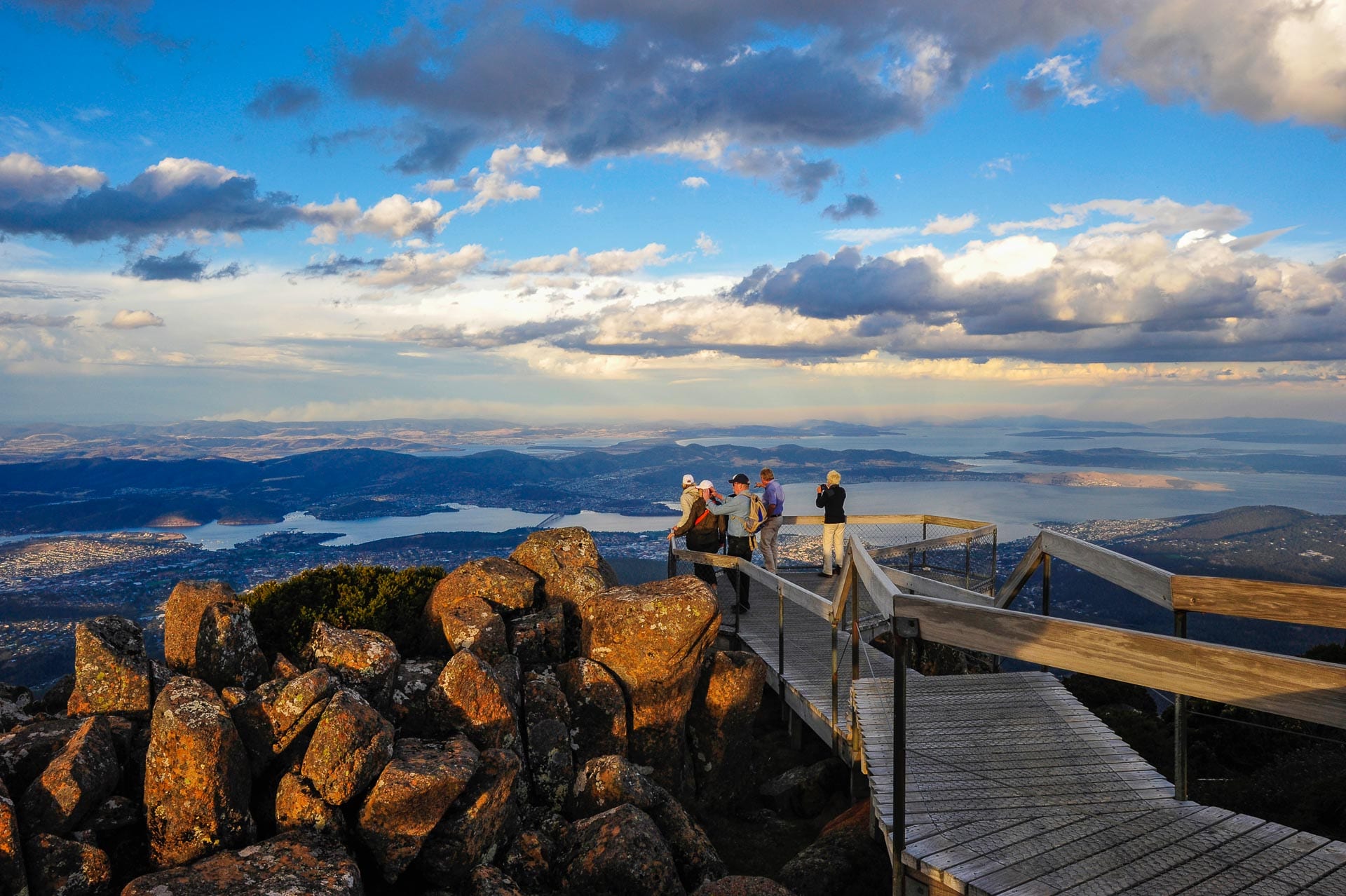Tasmania’s latest tourism slogan is “Come down for air”. Here’s why you should.
WORDS Giselle Whiteaker
Tasmania, the 26th largest island in the world, reportedly has some of the world’s cleanest water, some of the world’s best hiking trails, some of the most ancient plant species on Earth, the tallest flowering trees, the largest lavender farm, the world’s only monotremes and the largest carnivorous marsupial in the world – the Tasmanian Devil. With a population close to 500,000 in an area roughly the same size as Ireland, Switzerland or the U.S. state of West Virginia, there’s plenty of room to breathe – and breathe deep, as Tasmania also has the world’s purest air. It has to be said, nature is what Tasmania does best. Natural treasures abound across the state, but you won’t get to all in a single visit, so choose wisely. The Bay of Fires, Wineglass Bay, Boat Harbour, Friendly Beaches; the names alone paint a pretty picture. On the east coast, these pristine white-sand beaches stretch for miles, the sand so fine it squeaks underfoot.

Head west and you’ll find craggy cliffs overlooking the windswept coast. The west is also the gateway to World Heritage-listed wilderness: cool-temperate rainforest, waterfalls, mountains, valleys, and wild rivers can all be found here. From Cradle Mountain, rising out of Dove Lake in the picturesque north western wilderness to Lake St Clair in the central highlands, the deepest freshwater lake in Australia, and down to the South West Wilderness, one of the most remote and inaccessible areas in the country, the state defines the term ‘pristine’. Provenance is also a highlight of the island state. The rich, chocolate-coloured soil of the farmland in the north provides a plethora of produce from a patchwork of fields stretching over the hills, much of which is sold roadside, with passers-by dropping money into honesty boxes. Hand-painted signs dot the highway from north to south, touting cherries and berries, potatoes and pears. Road trippers stop at villages rich with convict history and buy honey and cheese, washing these wares down with cool-climate wines from the cellar door.

That home-farmed produce is also crafted into world-class dishes in a glut of oh-so-trendy restaurants and cafes. There’s a growing list of craft breweries; cider makers are making good use of the state’s apples; and the pure water is perfect for distilling whisky, vodka and gin – there are two ‘paddock to bottle’ single malt whisky distilleries in the world; Tasmania has one of them.
Take it all in. Sip, sup and savour the flavours, get lost in a gallery, wander and wonder at the bounty and beauty of this island jewel. And when you’re done, get ready to do it all again, because in Tasmania, there is always more to discover.
Learn more about our tours through Tasmania here